Small Home Gazette, Summer 2020
Remuddling Bungalows
I marvel at how quickly fashion trends come and go, though at my age “quickly” is a relative term. As I recounted in the Fall 2019 letter from the editor of this newsletter, I rode the early wave of bungalow “rediscovery” nearly three decades ago—along with many of you—then held on as it plateaued and finally ebbed to make way for the next big thing.
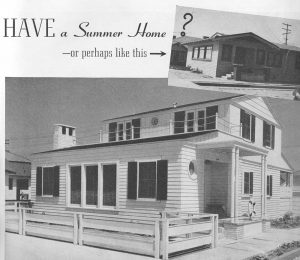
The original bungalow (upper right inset) in Newport Beach, Massachusetts, is described as “…a mean, dismal little bungalow…” It was transformed into a sleek beach house.
It is good to remind ourselves that all this has happened before, long before most of us were born. Bungalows were, of course, wildly popular when they were built in the nineteen-teens and early ‘twenties. But like all things fashionable, they fell from favor with a thud. Magazines catering to the building industry in the late 1920s began referring to bungalows as “no longer fashionable.” President Woodrow Wilson called a congressman “bungalow minded,” an insult suggesting irrelevance.
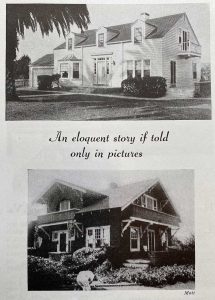
A couple purchased a Swiss chalet style bungalow (lower photo) “…at a very low figure because of the old style dwelling.” After remodeling (top photo) it is unrecognizable.
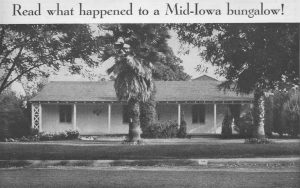
The headline of this article (above) might lead one to believe the original bungalow (below) was in Iowa. But it wasn’t—it was in California. Labeling it a “Mid-Iowa bungalow” supported the contention that the home’s style was perhaps “beneath” California and therefore deserved to be erased.
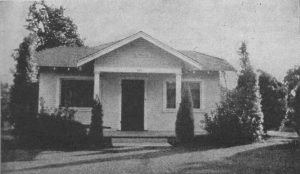
What then, were homeowners to do with their outmoded homes? Remodel, of course.
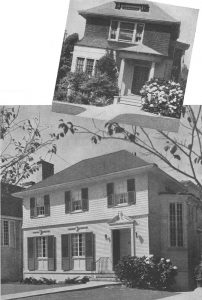
An architect likened the original home (top) to a diseased patient in need of amputation, or at least, a facelift.
The images on these pages are from a magazine-format publication titled REMODELING: 455 Ideas. Though it contains no publication year, I would guess it was released in the late 1930s or early ‘40s. Bungalows and other older houses were long out of style by then. What was in style? Well, many of the “after” images in the magazine can only be described as Colonial Revival. Though not directly articulated, the reader comes away with the impression that, at the time, Colonial Revival was considered the apex of human-kind’s taste and refinement.
It is illuminating to read the descriptions of the “before” houses. A brick bungalow is described as having a “low ugly porch.” A Foursquare is compared to a diseased person, for which the owner calls in an architect “…to discuss the case and diagnose the patient. Did the house need amputation, corrective treatment, or complete face lifting? He thought the patient could be enlivened out of recognition by a few skillful treatments…”
Another article explains that the house was “…a mean, dismal little bungalow originally, a type common on the West Coast, East Coast, and all over the country. Homeowners tear out their hair trying to figure out what they can do to give some charm and cheer to the exteriors of such houses.”
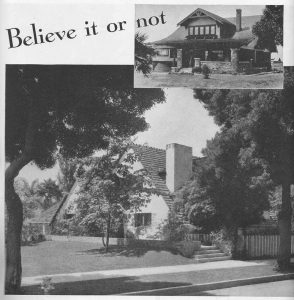
The owners of this bungalow (inset) hired an architect to turn it into an English style house. The architect? Frank Lloyd Wright, believe it or not.
Ouch.
In fairness, the concept of “out with the old, in with the new” is a deeply human urge that will always be with us. It is what first gave rise to the bungalow, after all. And people have always remodeled houses. In fact, when the Arts & Crafts revival was at its peak a few years ago, it was not unusual to find people remodeling their non-Arts & Crafts houses to remake them as bungalows, Prairie Schools and other early 20th century styles. Talk about irony.











